
When choosing windows for a home, deciding on the material exposed to the outside is important. This post is focused on the exterior window parts exposed to weather. While many materials can make up a window unit, this is where most window specifications start.
Energy efficiency is impacted by this material, but the unit’s U-factor (R-value) is more telling. Window unit types in choosing windows part 1 and part 2 quantities and orientation are bigger factors in resulting energy usage. Installation details with typical present practices, are most important for both energy and durability. Custom builders Asheville NC and others concerned with best practice installation can check out our Fine Homebuilding window installation videos.
You typically get what you pay for with windows and product quality can vary widely. Just as some company’s double-hungs can outperform another’s casements, the same holds true for materials and window unit performance. High-end vinyl windows exist that outperform fiberglass or aluminum clad products. A company’s reputation and how well they put the various components together will be the true measure of quality in the long run. Here is a summary of typical window exterior material choices from least to most expensive (generally).
Vinyl Windows
Vinyl is the most common window material in our country and typically the least expensive. The material will not rot, is impervious to insects and it’s virtually maintenance-free. Unless you love white or lighter, generic colors, its a problem aesthetically. Some elect to paint this material although most warranties are voided using any color with a LRV of less than 55 which is fairly light. Offerings and technology is improving but when you paint windows on-site, low maintenance benefits disappear and dark colors increase performance problems.
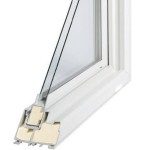
The biggest performance problem with vinyl is its expansion and contraction rate across common temperatures. Heat, cold and sunlight puts the material under stress which eventually causes failure at the joints or other material transitions. Installation details are extremely important. North-facing directions, and shade that blocks direct sunlight helps vinyl.
This material has good energy performance made even better by filling the frame with foam. Some brands offer excellent reputations with impressive performance numbers.
Wood Windows
Choosing wood for the exterior-exposed material in new windows is generally a bad idea. Do not select this material in new construction unless your historic conservation committee requires it or you are a glutton for maintenance. All-wood windows do fine in extremely protected locations or with homes that enjoy regular, needed maintenance.
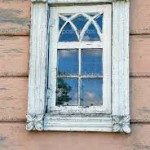
Window parts are small, thin and do not feature a shingle-style lap. These window parts are more exposed and vulnerable compared to siding and trim. Usually people put off frequent maintenance needs which leads to rot and structural damage when windows are in locations exposed to blowing rain.
If you must use wood, try to specify a rot-resistant species and go to extreme lengths on the paint job; near-perfect surface prep, two-part penetrating epoxy sealer, two-part epoxy lamination, finished by the highest quality latex paint available. Rainscreens, meticulous installation details and regular maintenance can all help quality wood windows last up to 100 years or more, even if not protected by orientation or overhangs.
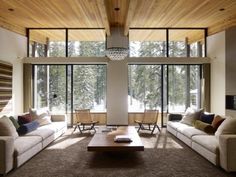 Aluminum AL/Steel
Aluminum AL/Steel
All-metal windows are extremely durable with the thinnest frames and profiles available which lend themselves well to modern designs. They typically are poor energy performers with strong thermal bridging at the frames. Storefront or commercial style windows are a better fit for these window types. Large areas of glass is more efficient than the same area of multiple windows. Installation is critical as in this Matt Risinger video.
Clad (Aluminum AL, Fiberglass, Vinyl)
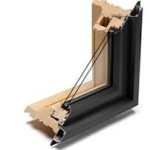
Clad generally refers to the window parts exposed to the exterior. Most clad units feature wood to the interior but also come in engineered wood, fiberglass and vinyl. Fiberglass and aluminum cladding can feature long-lasting, factory applied finishes of custom colors. Vinyl cladding can be a good option but comes with the drawbacks previously discussed.
Glass, wood and other parts expand and contract at different rates, so engineering the materials to work well together is no small feat. FG has a similar rate of expansion and contraction to glass, but manufacturers are currently more familiar and comfortable with AL. One distinction with AL is to look for extruded over cold-rolled aluminum.
Fiberglass FG Windows
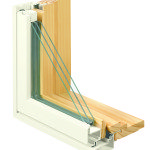
Fiberglass FG windows have less than 5% of market share but they are the fastest growing material segment. The James Hardie corporation (Hardie siding) is expanding into the window business with a fiberglass line. Generally offered in higher end products, FG prices are competitive with AL clad options or even high-end vinyls.
FG has the closest match to glass in rates of expansion and contraction. It is a strong material and lends itself well to smaller frames with more view to the outside. Reports of seal failure with FG windows appears to be rare. FG holds its finish well, usually on par with metal, although powder coated metal is tough to beat.
Windows and their exterior-exposed parts are weak links in the grand scheme of home maintenance and durability. It’s important to choose manufacturers with good reputation and service. Waterproof window installation has the most room for improvement in our industry so check back for the coming posts.
Brian Knight is the owner of Springtime Homes, custom home builders Asheville NC specializing in indoor-air quality and building science craftsmanship.

